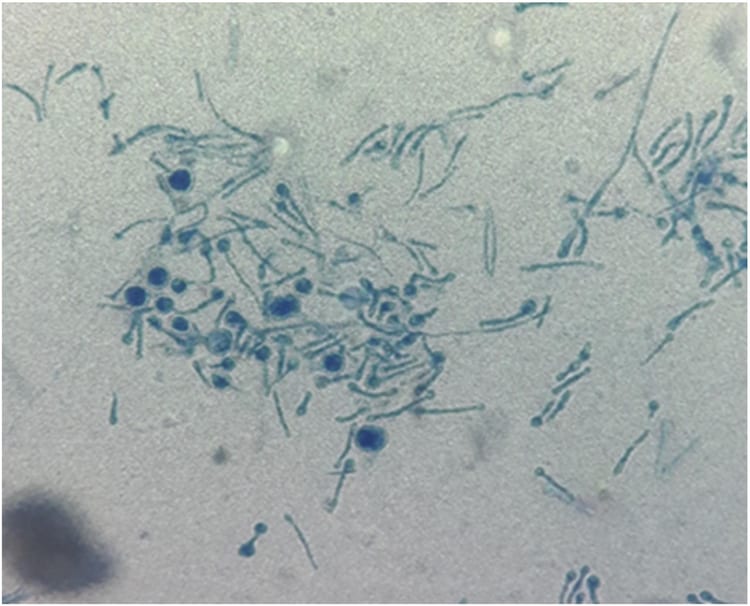The Expanding Threat Of Invasive Fungi In A Warming World

Table of Contents
Accelerated Spread of Invasive Fungi Due to Climate Change
Warmer temperatures and increased humidity are creating ideal breeding grounds for many fungal species. This leads to faster growth, increased reproduction rates, and ultimately, a wider geographic range for these invasive fungal pathogens.
-
Warmer Temperatures and Increased Humidity: Higher temperatures accelerate fungal metabolic processes, leading to faster growth and spore production. Increased humidity provides the moisture necessary for spore germination and fungal development. Several invasive fungal species, such as Phytophthora (responsible for devastating plant diseases like potato late blight) and Cryphonectria parasitica (the causal agent of chestnut blight), thrive in warmer, more humid conditions. These pathogens exhibit significantly increased spore production and dispersal under such conditions.
-
Changes in Precipitation Patterns: Altered rainfall patterns, characterized by alternating periods of drought and intense rainfall, create favorable conditions for fungal infections and spread.
- Droughts weaken plant defenses, leaving them more susceptible to fungal attacks. Stress weakens their immune response, making them easy targets for invasive fungi.
- Conversely, heavy rainfall and flooding aid in the dispersal of fungal spores over vast distances, rapidly expanding their reach into new territories.
-
Range Expansion into New Ecosystems: As climates shift, invasive fungi are colonizing new areas previously unsuitable for their survival. This range expansion disrupts native ecosystems, threatening biodiversity.
- The introduction of invasive fungi into new ecosystems can have cascading effects, leading to the decline or extinction of vulnerable plant and animal species.
- For example, the introduction of fungal pathogens to naïve ecosystems can lead to severe die-offs among susceptible species, causing a significant loss of biodiversity and ecosystem services.
Ecological and Economic Consequences of Invasive Fungal Pathogens
The ecological and economic impacts of invasive fungal pathogens are substantial and far-reaching. These invasive species are causing significant damage across various sectors.
-
Impact on Biodiversity: Invasive fungi are devastating plant and animal populations globally. They cause widespread disease, leading to species extinctions and ecosystem collapse.
- Bat white-nose syndrome, caused by the fungus Pseudogymnoascus destructans, has decimated bat populations in North America.
- Chytridiomycosis, caused by the fungus Batrachochytrium dendrobatidis, is a major cause of amphibian declines worldwide. These examples highlight the catastrophic impact of invasive fungi on biodiversity.
-
Agricultural Losses and Food Security: Invasive fungi cause significant economic losses in agriculture, threatening food security. Crop failures due to fungal diseases lead to reduced yields and increased food prices.
- Late blight of potato (Phytophthora infestans) remains a significant threat to potato production globally, causing devastating crop losses and famine in the past.
- Wheat rusts, caused by various Puccinia species, can significantly reduce wheat yields, impacting global food supplies. These fungal diseases cost billions of dollars annually in crop losses and control measures.
-
Threats to Human Health: Invasive fungi are an increasing threat to human health, particularly for immunocompromised individuals. The emergence of drug-resistant strains further complicates treatment.
- Candida auris, a multi-drug resistant fungus, poses a serious threat to hospitalized patients, causing bloodstream infections with high mortality rates.
- The rising incidence of fungal infections highlights the urgent need for improved surveillance, diagnostic tools, and antifungal therapies.
Mitigation and Management Strategies for Invasive Fungi
Combating the threat of invasive fungi requires a multi-pronged approach involving early detection, resistant varieties, and biocontrol strategies.
-
Early Detection and Rapid Response: Establishing effective early detection systems and rapid response protocols is crucial for containing the spread of invasive fungi. This involves rigorous surveillance, monitoring, and quarantine measures.
- Implementing robust surveillance programs helps in the early detection of invasive fungal outbreaks, allowing for timely intervention and minimizing their spread.
- Quarantine measures can prevent the introduction and establishment of invasive fungal species in new areas.
-
Development of Resistant Varieties: Research efforts are focused on developing plant and animal varieties resistant to invasive fungal pathogens. This includes traditional breeding programs and advanced genetic engineering techniques.
- Developing resistant cultivars is a crucial aspect of integrated pest management, minimizing the need for chemical interventions.
- Utilizing genetic engineering to introduce resistance genes can provide a more rapid solution, but necessitates careful consideration of ecological implications.
-
Biocontrol Agents and Integrated Pest Management: Biocontrol agents and integrated pest management (IPM) strategies offer environmentally friendly approaches to managing invasive fungi.
- Introducing natural enemies of invasive fungi can effectively suppress their populations, reducing the need for chemical controls.
- Implementing IPM strategies integrates various control methods, minimizing environmental impact while maximizing effectiveness.
Conclusion
The expanding threat of invasive fungi is a critical issue exacerbated by climate change. The devastating impacts on biodiversity, agriculture, and human health necessitate urgent global action. By understanding the mechanisms driving the spread of invasive fungal pathogens, and supporting initiatives to mitigate their spread, we can protect biodiversity, ensure food security, and safeguard human health. Let's prioritize research, implement effective management strategies, and advocate for policies addressing climate change and invasive species management. The fight against invasive fungi requires global collaboration and proactive measures.

Featured Posts
-
 How To Train Your Dragon Toothless Vs Red Death Size Comparison
May 26, 2025
How To Train Your Dragon Toothless Vs Red Death Size Comparison
May 26, 2025 -
 F1 Style Icons Why Formula 1 Drivers Are The Trendsetters Of 2024
May 26, 2025
F1 Style Icons Why Formula 1 Drivers Are The Trendsetters Of 2024
May 26, 2025 -
 Pogacars Solo Breakaway Secures Tour Of Flanders Win
May 26, 2025
Pogacars Solo Breakaway Secures Tour Of Flanders Win
May 26, 2025 -
 La Lutte Contre Le Piratage Iptv En Belgique Rtbf Et Rtl Unissent Leurs Forces
May 26, 2025
La Lutte Contre Le Piratage Iptv En Belgique Rtbf Et Rtl Unissent Leurs Forces
May 26, 2025 -
 Best Nike Running Shoes 2025 Expert Reviews And Comparisons
May 26, 2025
Best Nike Running Shoes 2025 Expert Reviews And Comparisons
May 26, 2025
